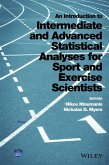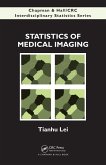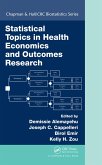This book introduces the use of statistics to solve a variety of problems in exercise science and health and provides readers with a solid foundation for future research and data analysis. Statistics for Exercise Science and Health with Microsoft Office Excel: * Aids readers in analyzing their own data using the presented statistical techniques combined with Excel * Features comprehensive coverage of hypothesis testing and regression models to facilitate modeling in sports science * Utilizes Excel to enhance reader competency in data analysis and experimental designs * Includes coverage of both binomial and poison distributions with applications in exercise science and health * Provides solved examples and plentiful practice exercises throughout in addition to case studies to illustrate the discussed analytical techniques * Contains all needed definitions and formulas to aid readers in understanding different statistical concepts and developing the needed skills to solve research problems
Dieser Download kann aus rechtlichen Gründen nur mit Rechnungsadresse in D ausgeliefert werden.









